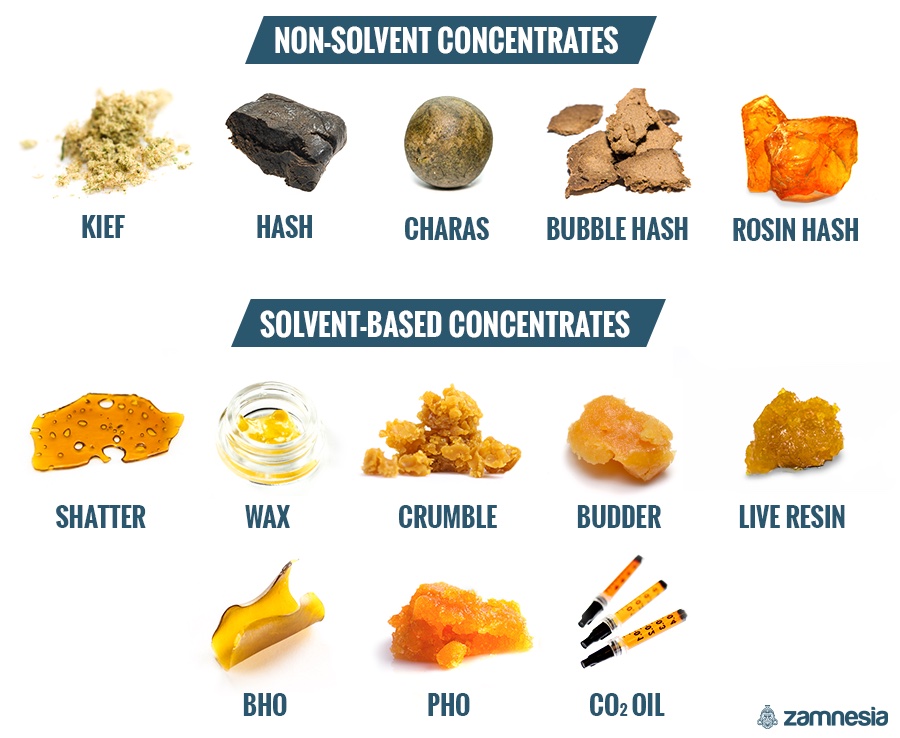
By Caribborida Ga
Cannabis has a long history of use, and in recent years, various extraction methods have allowed for the creation of potent cannabis oils and concentrates from the flower. These extracts have gained popularity due to their versatility and potency, catering to both recreational and medicinal users. In this article, we will delve into the process of transforming cannabis flowers into oils and concentrates, highlighting the differences between solvent and solventless extraction methods and the products derived from each.
Cannabis Flower Extraction Methods
- Solvent-Based Extraction:
Solvent-based extraction methods involve the use of chemical solvents to dissolve the essential compounds, including cannabinoids, terpenes, and flavonoids, from the cannabis flower. The primary solvents used in this process are:
a. Butane and Propane (BHO – Butane Hash Oil and PHO – Propane Hash Oil): These hydrocarbon gases are highly effective at extracting cannabinoids and terpenes. BHO and PHO are popular choices for producing potent concentrates like shatter, wax, and live resin.
b. CO2 (Supercritical CO2 Extraction): Supercritical CO2 extraction utilizes pressurized carbon dioxide to extract cannabinoids and terpenes. This method is known for its purity and versatility, yielding a range of products, including oils, waxes, and isolates.
c. Ethanol (Alcohol Extraction): Ethanol is a safer and more affordable option, commonly used to create cannabis tinctures, oils, and concentrates.
Products from Solvent-Based Extraction:
Solvent-based extraction methods produce a variety of cannabis concentrates and oils, each with its unique characteristics:
- Shatter: Shatter is a translucent, glass-like concentrate with high cannabinoid content and purity.
- Wax and Budder: These concentrates have a crumbly or butter-like texture, often boasting a rich terpene profile for enhanced flavor.
- Oils and Tinctures: Cannabis oils and tinctures are versatile products suitable for oral consumption, vaping, or incorporation into edibles.
- Solventless Extraction:
Solventless extraction methods do not rely on chemical solvents. Instead, they employ mechanical or heat and pressure-based techniques to separate trichome heads from the cannabis flower. Common solventless extraction methods include:
a. Dry Sift: Dry sift involves sifting cannabis flowers or trim over a fine mesh to collect the kief or trichome heads. This can be pressed into hashish or used as an additive.
b. Rosin Pressing: Rosin pressing uses heat and pressure to extract resin from cannabis flowers, resulting in a clean and flavorful concentrate known for its potency.
c. Ice Water Hash: This method utilizes ice water and agitation to isolate trichome heads, which are then dried to create high-quality hashish.
Products from Solventless Extraction:
Solventless extraction methods yield products with distinct qualities:
- Hashish: Hashish, made through dry sift or ice water hash, is a potent concentrate with a rich cannabinoid and terpene profile, offering versatility in consumption methods.
- Rosin: Rosin is a clean and flavorful concentrate with high potency, ideal for dabbing, vaping, or infusing into edibles.
Key Differences Between Solvent and Solventless Extraction:
- Safety: Solventless extraction methods are generally considered safer because they do not involve the use of flammable chemicals like butane or propane.
- Purity and Flavor: Solventless extracts often preserve more of the cannabis plant’s natural terpenes, resulting in a fuller flavor profile compared to some solvent-based extracts.
- Versatility: Solvent-based extraction methods offer a wider range of products, while solventless methods are more limited in terms of the types of concentrates that can be produced.
The process of transforming cannabis flowers into oils and concentrates has evolved significantly, offering consumers a diverse array of products with varying characteristics. Whether one chooses solvent-based or solventless extraction methods depends on individual preferences, safety considerations, and desired product attributes. As the cannabis industry continues to innovate, both extraction techniques will continue to contribute to the wide and evolving world of cannabis concentrates and oils.

